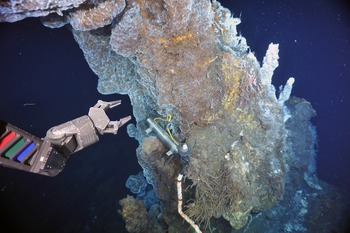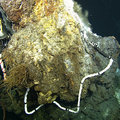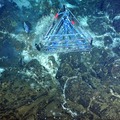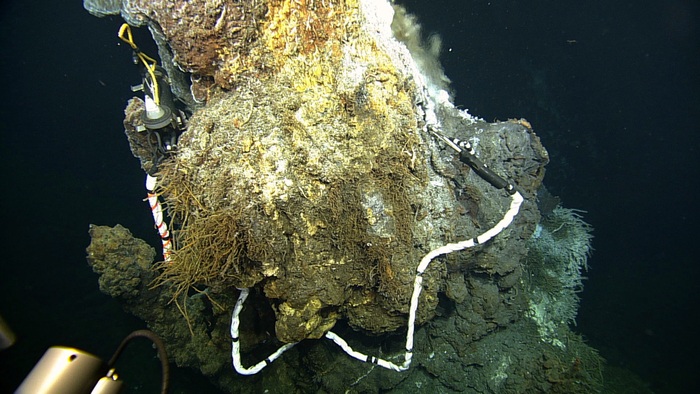
A resistivity-temperature probe, developed by Dr. Marv Lilley at the University of Washington, was deployed into a 270°C actively venting orifice on the chimney called Escargot. Resistivity is an analogue for chlorinity. Some of the vents in the International District are boiling, causing release of very gas-rich, low-salinity fluids. This instrument, recovered on ROPOS dive 1638, was deployed on a small ledge on the structure a few weeks previously with power provided by batteries in the titanium housing. The orange-white taped cable leads to the wand that is inserted into the chimney (not shown in this image). The white, feathery material on the outside of the chimney is filamentous bacteria, supported by low-temperature diffuse fluids that waft up the side of the chimney. Photo credit: NSF-OOI/UW/CSSF
In 2013, during the VISIONS'13 UW-RSN-OOI Expedition, a battery-powered version of the temperature-resistivity probe was installed in a 270°C actively venting orifice on the hydrothermal chimney called Escargot in the International District Hydrotherhmal Field. The resistivity-probe successfully collected data for 2 weeks before it was recovered.
This instrument was developed by Marv Lilley (UW). The cabled version of the Res Probe will be installed at Escargot in 2014 as part of the International District Hydrothermal Field (MJ03C) instrumentation. Other instruments attached to the medium-power J-Boc (MJ03C) will include a vent fluid-microbial DNA sampler, a mass spectrometer, and pH-H2S-H2-tempertature instrument.





